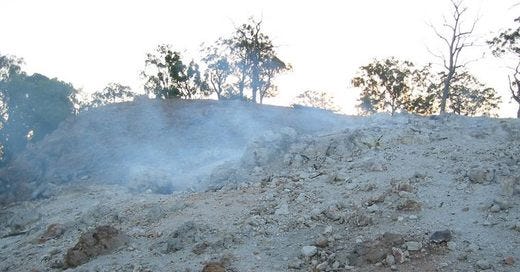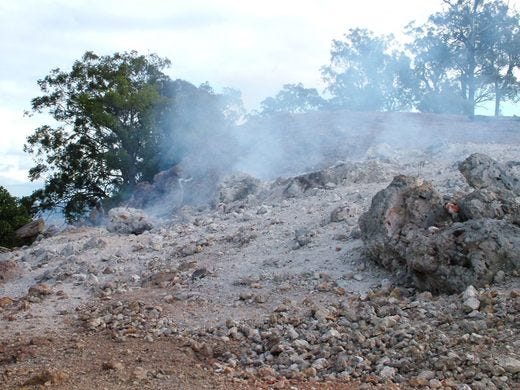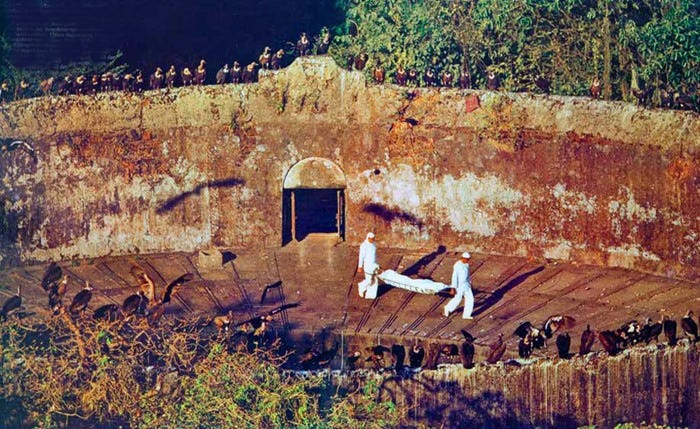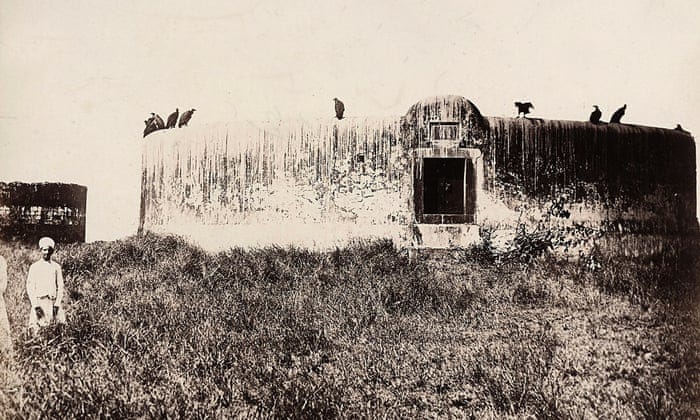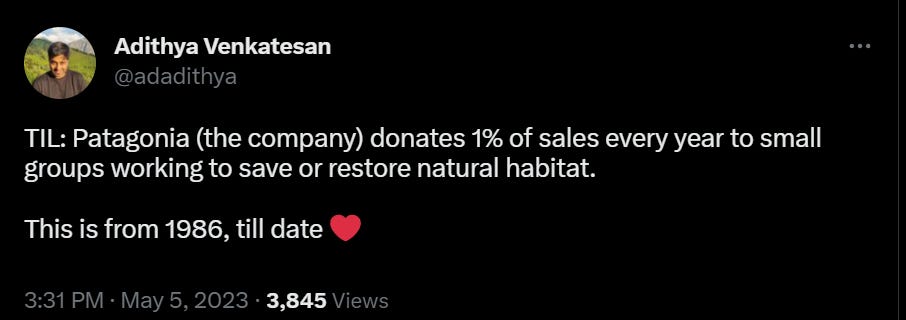Morning Diggers!
This episode of Benedict’s Burrow was sponsored by Benedict’s renewed energy and optimism. Hopefully, this marks the end of my laziness spell and I find these pockets of enthusiasm.
One interesting tidbit about today’s dig came from a small project I made. It’s a chrome extension that spits out a new fun fact every time you open a new tab (download it here, show your boy some love haha and it’s FREE).
Grab your shovels and jump in, fam (but before that if you haven’t)
Meet Wingen, the mountain that’s been burning for 6000 years.
I thought my smoldering flame for my exes will last the longest but then you see this mountain in Australia — Wingen that’s been wingin’ it for 6000 bloody years.
Coal seams are common across the world, and there are more than 1000 burning, concurrently. A coal seam below New South Wales has been burning and slowly moving south along the mountain at a rate of 1m/year. In its history, the seam has covered a total area of 6.5 km, making it the oldest continuous coal fire in the world.
Most of these fires happen frequently in lesser-developed mineral rich countries, but most of them extinguished. Considering the average duration of a coal seam fire, Mount Wingen’s fiery longevity has become something of a wonder across the globe and tourists have flocked to see the sulfur-tinged smoke emanating from the mountain. Most assumed the fire was caused by volcanic activity, but it is now clear coal was ignited by a lightning strike or brush fire thousands of years earlier.
Sky Burials
I was listening to this podcast, Corpse Demon by Radiolab and they talk about a morbid topic of burial but with a twist. Sky burials conjure up an image of a body placed on top of a Mayan pyramid-like structure which slowly floats up. But in reality this exactly what Zoroastrians do — a clean, efficient way.
Indians who practice Zoroastrianism are called Parsis and they have a peculiar way of disposing their dead ones — exposure. They have structures called The Tower of Silence where dead bodies are exposed to scavenger birds. But the question is how much longer can this 3,000-year-old tradition survive?
Here’s why sky burials are a thing for Parsis:
Keeping aside the macabre imagery, this system of exposure known as dokhmenashini is swift and ecologically sound. It’s also softened by mythology: the soul’s cosmic transition is aided by the vulture’s mystic eye, and the feeding of one’s dead body to the birds is considered the devout Zoroastrian’s final act of charity - Bachi Karkaria for the Guadian.
The second someone dies there's a corpse demon called Nasu who is beckoned. And they believe that that demon is what starts to cause the decay of the body. Essentially, when the vultures eat the body, they're protecting us from this demon. There's also a more practical reason according to Radiolab: if you were to bury the body, that's sort of polluting the earth which they don't wanna do. If they burn the body, that's polluting the sky. And they felt that if the vultures eat the body it recycles it back into nature.
The Twist?
This goes way back to 2015ish, but the unconsumed corpses piled up because there was unprecedented decline in the vulture population. The vultures disappeared. Closer investigation revealed that the livestock version of the drug Diclofenac, developed in the early 1990s proved toxic and disastrous for the vultures feeding on bovine carcases.
As of March 2023, about 99% of India’s vulture population has been on the decline since 1980s. With the vultures gone, the ancient ritual of sky burials also comes to a brink of extinction, at least in India. Like all things, modern technology has tried to replace this 3000-year old ritual in the form of a solar concentrator to speed up decomposition of mortal remains leaving the Parsi community a bit divided.
Fidel Castro’s Dairy Addiction
This story is just wild! In one line, Castro wanted to bring about a milk revolution in Cuba by having supercows — millions of them. While it was not an udder failure, here are some mindboggling facts that surprise me :
A small dairy farm in the Cuban city of Nueva Gerona stands a life-sized statue, cast in gleaming white marble, of the country’s most sacred cow — Ubre Blanca, or White Udder who became a symbol of national pride to millions of Cubans.
After seizing power in 1959, Castro wanted to make milk the staple of the national diet, and had big plans for the Cuban dairy industry, but there was a small problem: Cuba’s native cattle, the Cebu, were raised for meat, not milk, and the tens of thousands of milk-producing Holstein cows that had been imported at huge expense were ill-suited to the island’s tropical climate. Castro’s ingenious solution was to use artificial insemination to create “supercows”
Cebu cows (meat) + Holstein cows (milk) = SUPER🐄Ubre Blanca, born in 1972, was a product of those genetic experiments, and the program’s only real success - in June 1982 she became a national hero when she produced 109.5 litres (28.9 gallons) of milk in a single day. They soon started milking her: she smashed another record when she had yielded 24,269 litres (6,411 gallons) over a 305-day lactation cycle. Her output was almost four times that of an average cow.
I definitely envy Ubre Blanca’s life. Imagine living at a state-of-the-art, air-conditioned stable and receiving round-the-clock care and attention from a specially-selected team of handlers, and was watched over by armed military escorts. Soothing music being played into the stalls during each of her four daily milkings, and her food was tested on other animals before she ate it, lest anyone attempt to poison her.
When she died, she was given military honors, a full-page obituary in the state newspaper and a heartfelt eulogy from the poet laureate, while the country’s most popular musicians wrote songs celebrating her remarkable life.
Apart from reading these articles, I’ve also spent some time on social media doom-scrolling, listening, hearing, and watching some nice stuff. Here are some recommendations 👇
What am I listening & watching?
I was watching Chungking Express by this critically acclaimed Hong Kong director, Wong Kar Wai and during the second part of the movie this soundtrack repeats itself at apt moments. Clearly goes into my Spotify “Forever” Playlist.
Interesting tweet of the week
Until next time, keep burrowing 🕳
-Benedict

